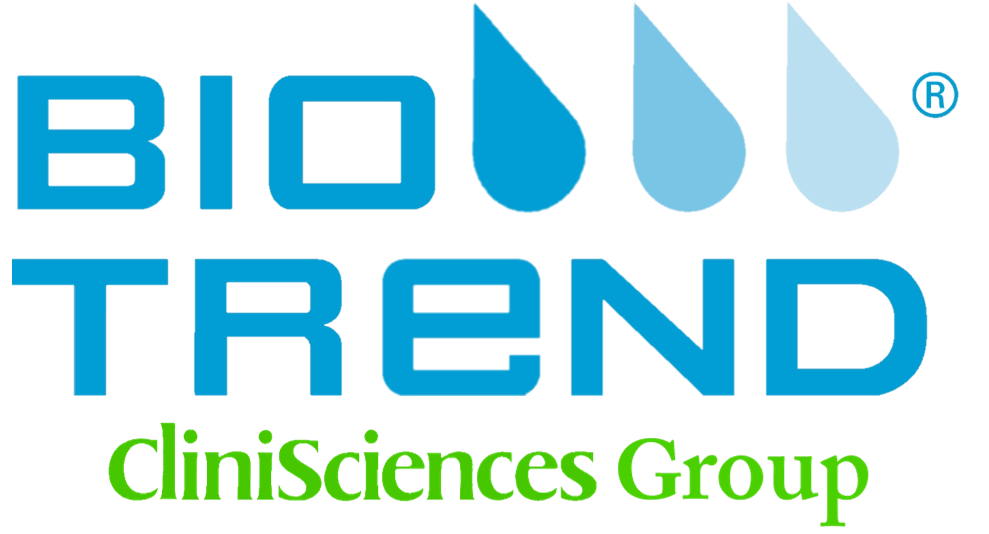Anti-SARS-CoV-2 Spike RBD (Clone 2165) - HRP
Cat# LT1910-50
Size : 50µg
Brand : Leinco Technologies
AntiSARSCoV2 Spike RBD (Clone 2165) – HRP
AntiSARSCoV2 Spike RBD (Clone 2165) – HRP
Product No.: LT1910
Product No.LT1910 Clone 2165 Target SARSCoV2 RBD Product Type Recombinant Monoclonal Antibody Alternate Names COV22165, SARSCoV2 Spike RBD Antibody, Receptor Binding Domain Monoclonal Antibody Isotype Human IgG1 Applications ELISA , IHC |
Data
Antibody DetailsProduct DetailsReactive Species SARSCoV2 ⋅ Virus Expression Host HEK293 Cells Immunogen Sequenced from human survivors of COVID19 (SARSCoV2) Product Concentration 0.5 mg/ml Formulation This recombinant HRPconjugated antibody is formulated in 0.01 M phosphate buffered saline (150 mM NaCl) PBS pH 7.2 7.4, 1% BSA. (Warning: Use of sodium azide as a preservative will inhibit the enzyme activity of horseradish peroxidase) Storage and Handling This horseradish peroxidase conjugated monoclonal antibody is stable when stored at 28°C. Do not freeze. Country of Origin USA Shipping Overnight on Blue Ice. RRIDAB_2893934 Applications and Recommended Usage? Quality Tested by Leinco ELISA Additional Applications Reported In Literature ? IHC Each investigator should determine their own optimal working dilution for specific applications. See directions on lot specific datasheets, as information may periodically change. DescriptionDescriptionSpecificity AntiSARSCoV2 Spike RBDHRP, clone 2165, specifically targets an epitope on the SARSCoV2 spike protein receptorbinding domain (RBD). Background Severe acute respiratory syndrome coronavirus 2 (SARSCoV2), the causative agent of coronavirus disease 2019 (COVID19), is an enveloped, singlestranded, positivesense RNA virus that belongs to the Coronaviridae family 1. The SARSCoV2 genome, which shares 79.6% identity with SARSCoV, encodes four essential structural proteins: the spike (S), envelope (E), membrane (M), and nucleocapsid protein (N) 2. The S protein is a transmembrane, homotrimeric, class I fusion glycoprotein that mediates viral attachment, fusion, and entry into host cells 3. Each ~180 kDa monomer contains two functional subunits, S1 (~700 a.a) and S2 (~600 a.a), that mediate viral attachment and membrane fusion, respectively. S1 contains two major domains, the Nterminal (NTD) and Cterminal domains (CTD). The CTD contains the receptorbinding domain (RBD), which binds to the angiotensinconverting enzyme 2 (ACE2) receptor on host cells 35. Although both SARSCoV and SARSCoV2 bind the ACE2 receptor, the RBDs only share ~73% amino acid identity, and the SARSCoV2 RBD binds with a higher affinity compared to SARSCoV 3, 6. The RBD is dynamic and undergoes hingelike conformational changes, referred to as the “down” or “up” conformations, which hide or expose the receptorbinding motifs, respectively 7. Following receptor binding, S1 destabilizes, and TMPRSS2 cleaves S2, which undergoes a pre to postfusion conformation transition, allowing for membrane fusion 8, 9. Polyclonal RBDspecific antibodies can block ACE2 binding 10, 11, and antiRBD neutralizing antibodies are present in the sera of convalescent COVID19 patients 12, identifying the RBD as an attractive candidate for vaccines and therapeutics. In addition, the RBD is poorly conserved, making it a promising antigen for diagnostic tests 13 14. Serologic tests for the RBD are highly sensitive and specific for detecting SARSCoV2 antibodies in COVID19 patients 13 15. Furthermore, the levels of antiRBD antibodies correlated with SARSCoV2 neutralizing antibodies, suggesting the RBD could be used to predict an individual's risk of disease 13. Antigen Distribution The spike RBD is expressed on the surface of SARSCoV2. PubMed NCBI Gene Bank ID Research Area COVID19 . Infectious Disease . Seasonal and Respiratory Infections . Viral . IVD Raw Material References & Citations1. Zhou, P., Yang, X., Wang, X. et al. Nature 579, 270–273. 2020. 2. Wu, F., Zhao, S., Yu, B. et al. Nature 579, 265–269. 2020. 3. Wrapp D, Wang N, Corbett KS, et al. bioRxiv. 2020.02.11.944462. 2020. 4. Walls AC, Park YJ, Tortorici MA, Wall A, McGuire AT, Veesler D. Cell. 181(2):281292.e6. 2020. 5. Li W, Zhang C, Sui J, et al. EMBO J. 24(8):16341643. 2005. 6. Shang, J., Ye, G., Shi, K. et al. Nature 581, 221–224. 2020. 7. Gui M, Song W, Zhou H, et al. Cell Res. 27(1):119129. 2017. 8. Walls AC, Tortorici MA, Snijder J, et al. Proc Natl Acad Sci U S A. 114(42):1115711162. 2017. 9. Hoffmann M, KleineWeber H, Schroeder S, et al. Cell. 181(2):271280.e8. 2020. 10. Huo J, Zhao Y, Ren J, et al. Cell Host Microbe. S19313128(20)303516. 2020. 11. Tai, W., He, L., Zhang, X. et al. Cell Mol Immunol 17, 613–620. 2020. 12. Cao Y, Su B, Guo X, et al. Cell. 182(1):7384.e16. 2020. 13. Premkumar L, SegoviaChumbez B, Jadi R, et al. medRxiv; 2020. 14. Quinlan BD, Mou H, Zhang L, et al. bioRxiv; 2020. 15. Olba NM, Muller MA, Li W, et al. medRxiv; 2020. You might also be interested by the following products:
Cat#
Description
Cond.
Price Bef. VAT
|



